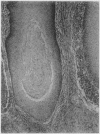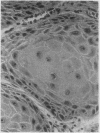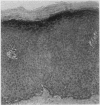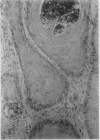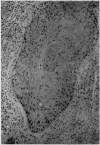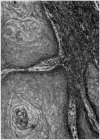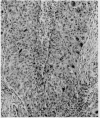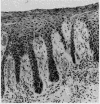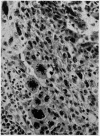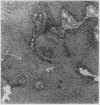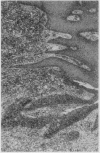Abstract
Twenty-four cases of giant condyloma acuminata were found among 100 cases diagnosed as carcinoma of the penis. One of the 24 tumours showed early malignant change. The characteristic histological pattern of giant condyloma consists of broad processes composed of prickle cells associated with little keratinization. The malignant condylomas show, in comparison, a loss of prickle cell preponderance, increased basal cell activity and frequent keratinization, or may present as a solid papillary epithelioma forming broad sheets of uniform cells with many mitoses. The incidence of malignant change in the giant condyloma and the relationship between the benign and malignant tumours are discussed.
Full text
PDF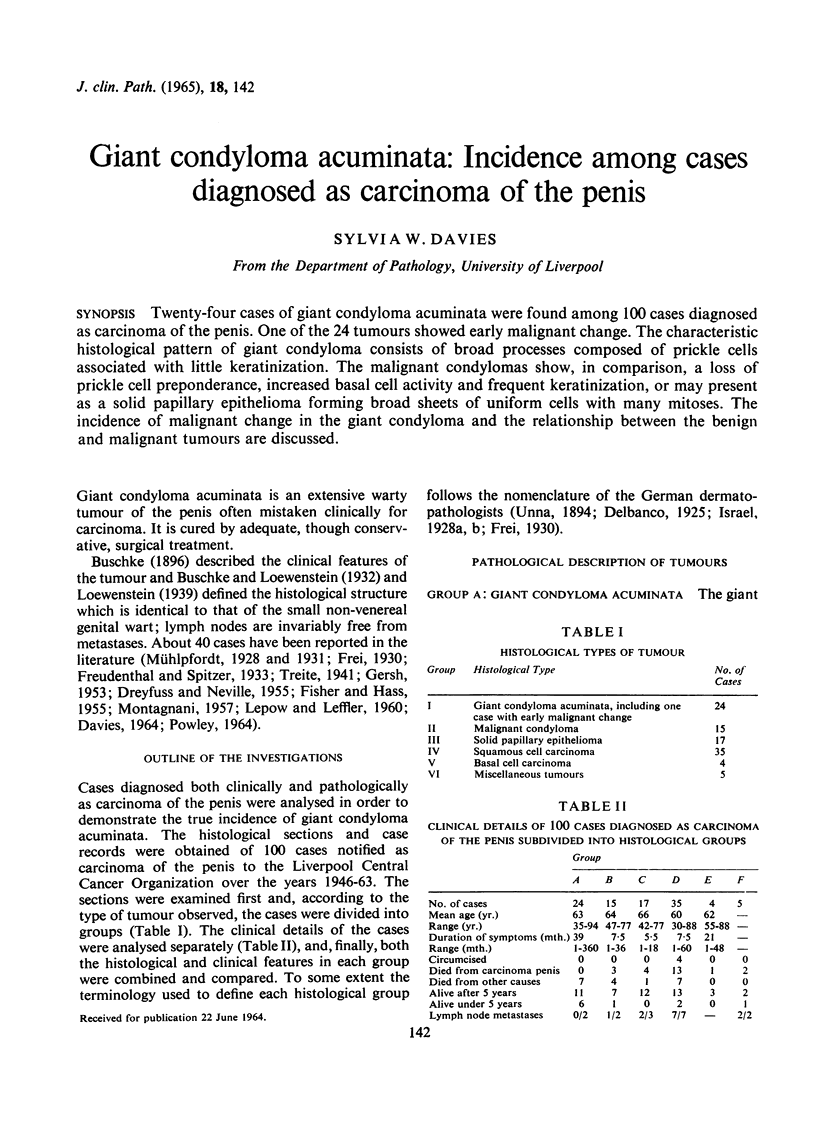
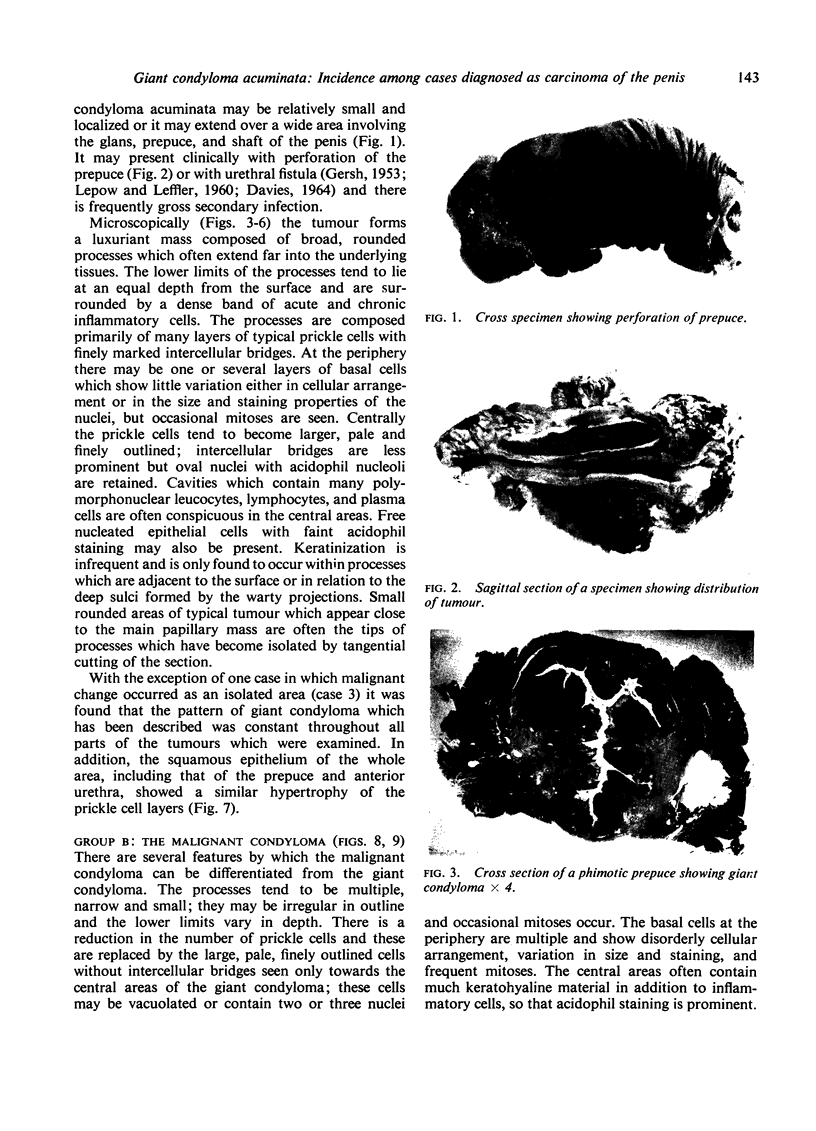
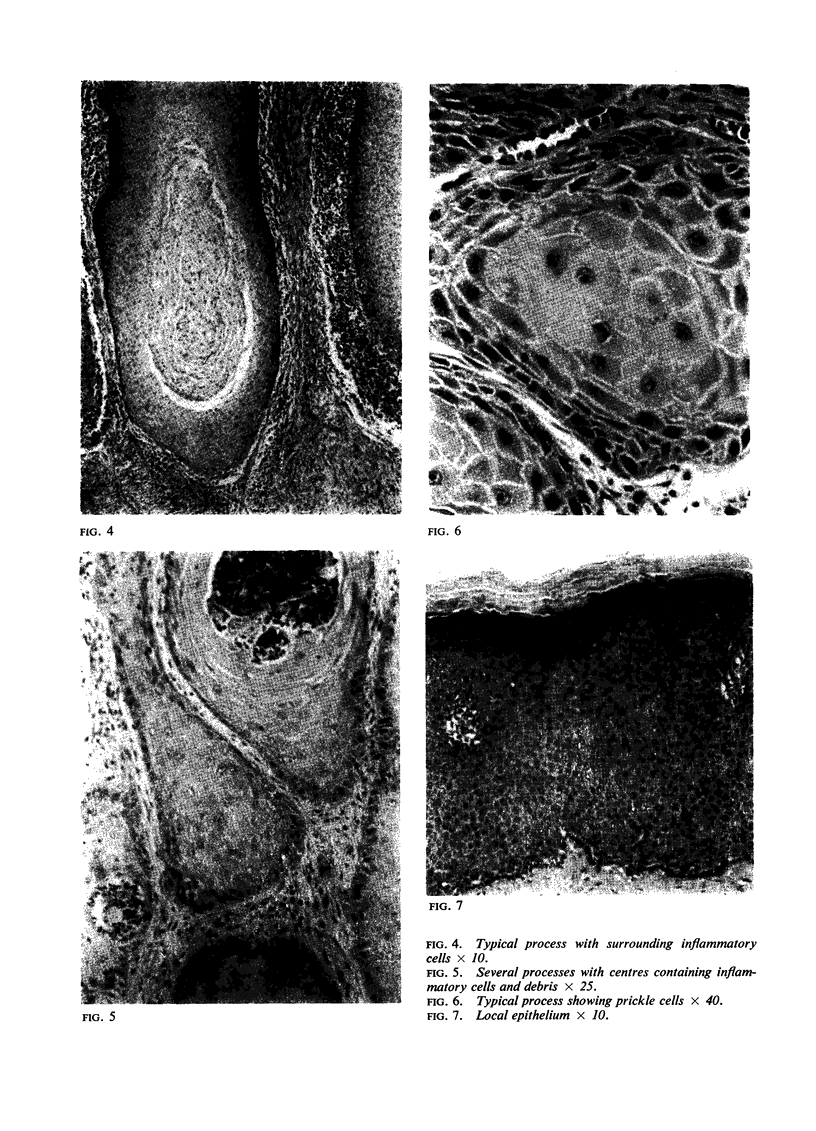
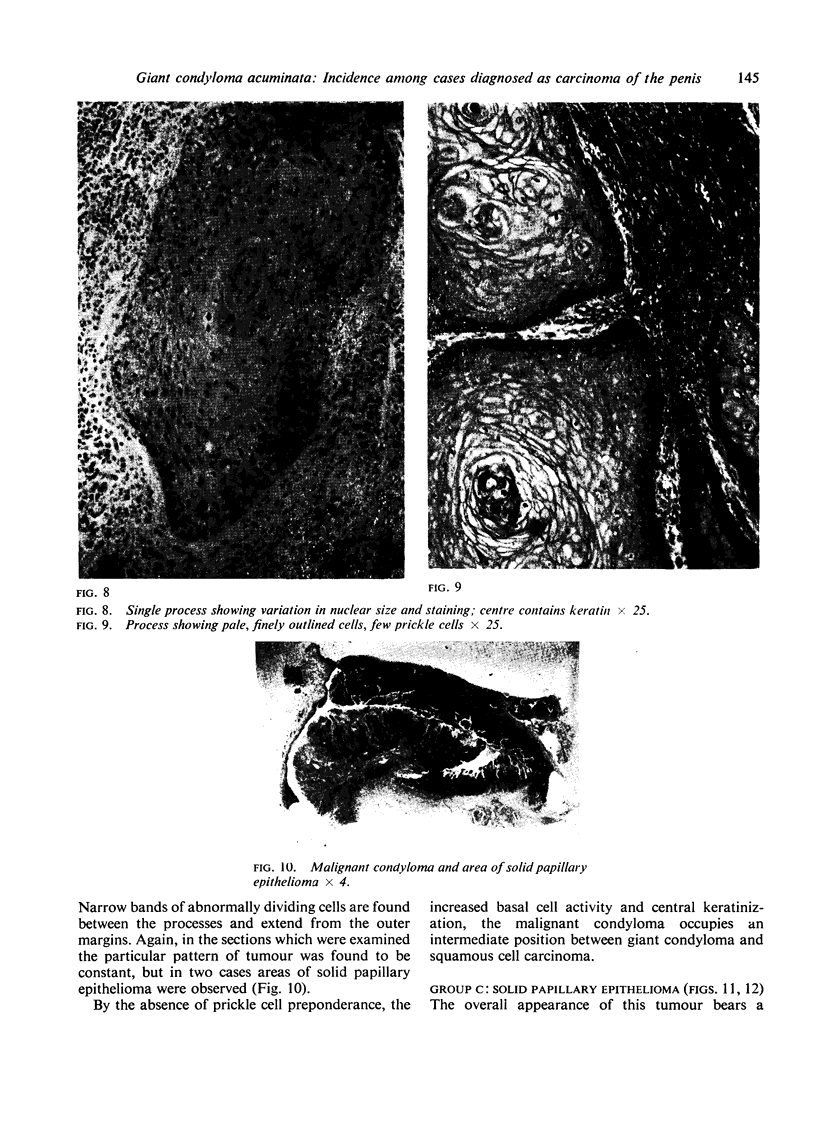
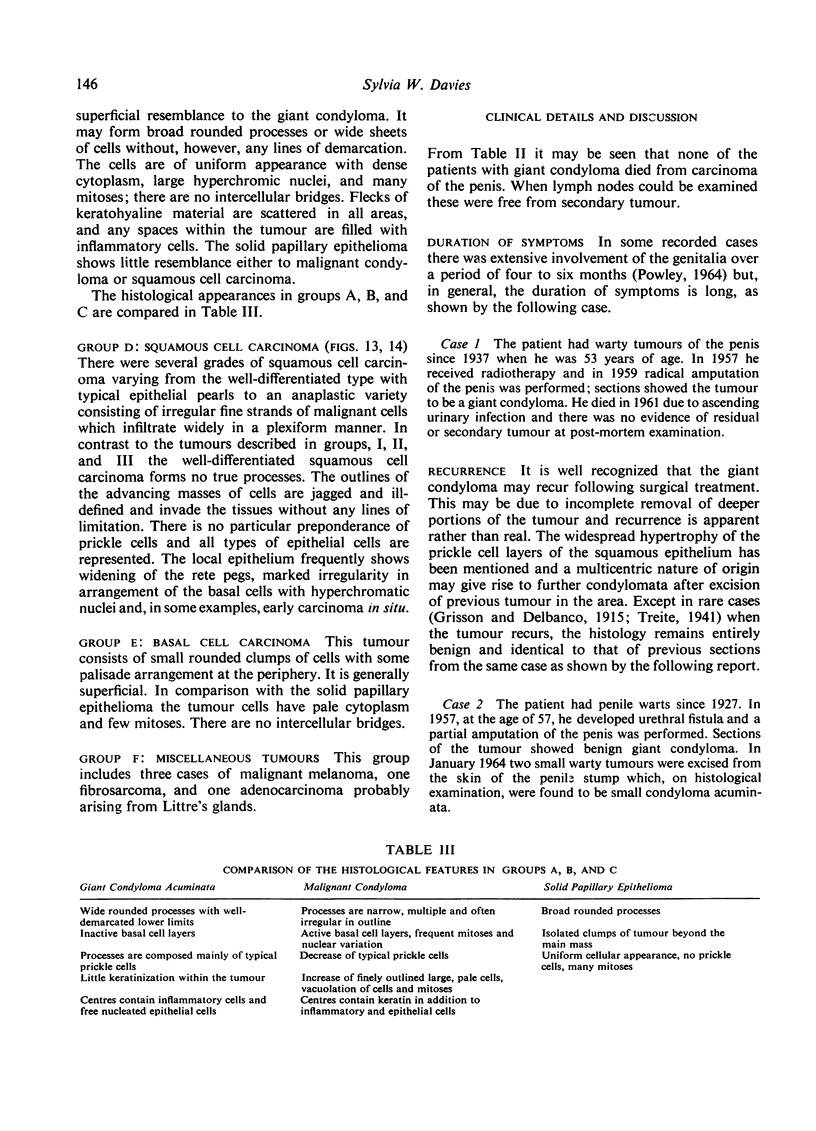
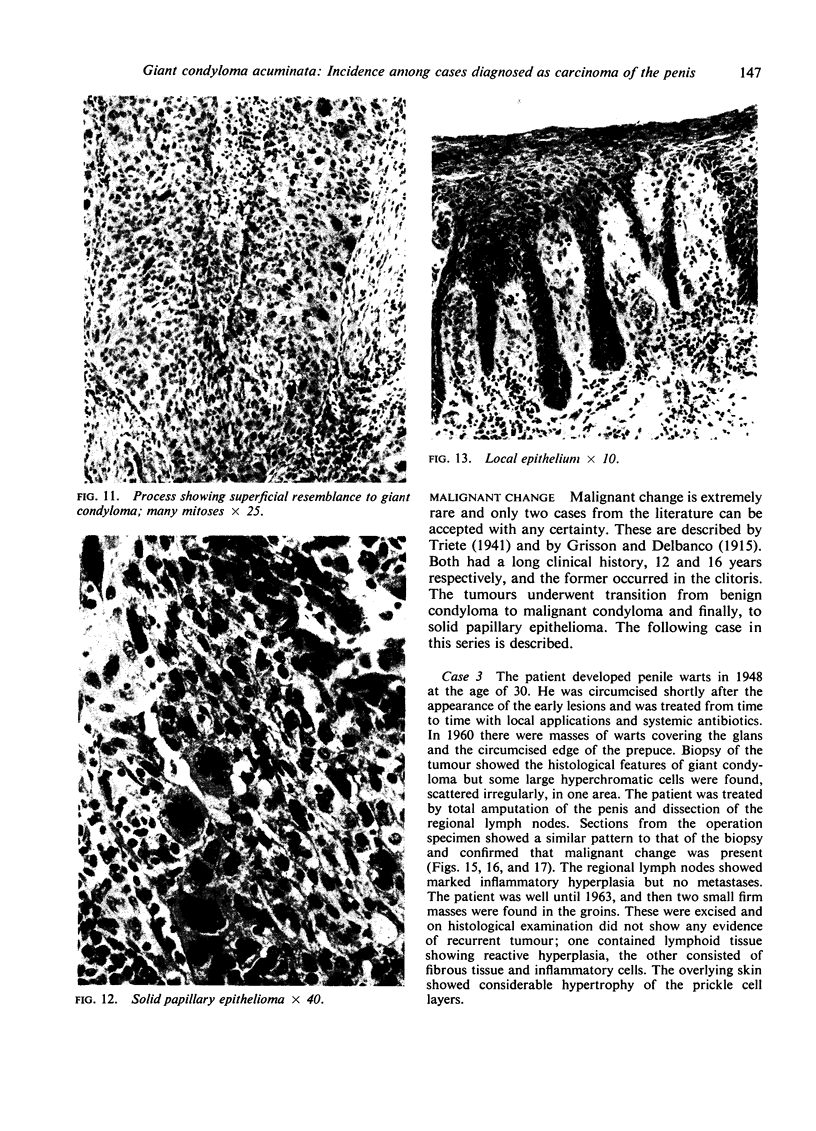
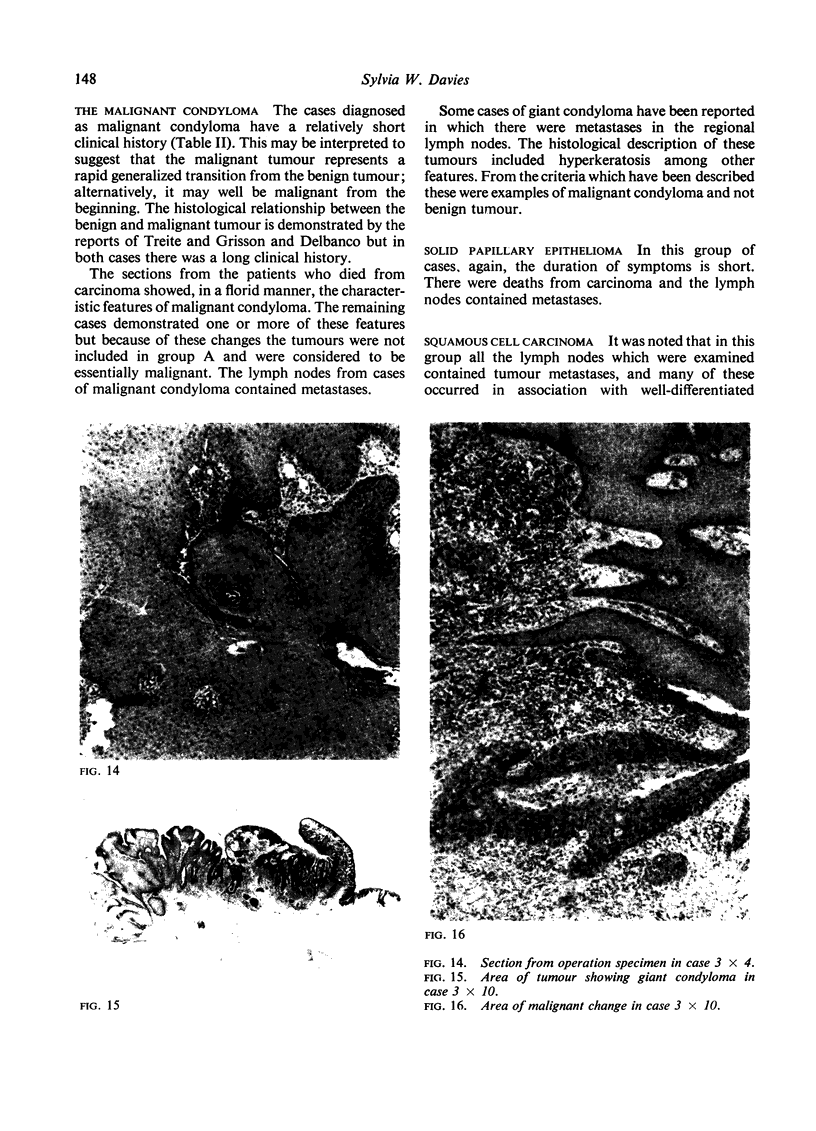
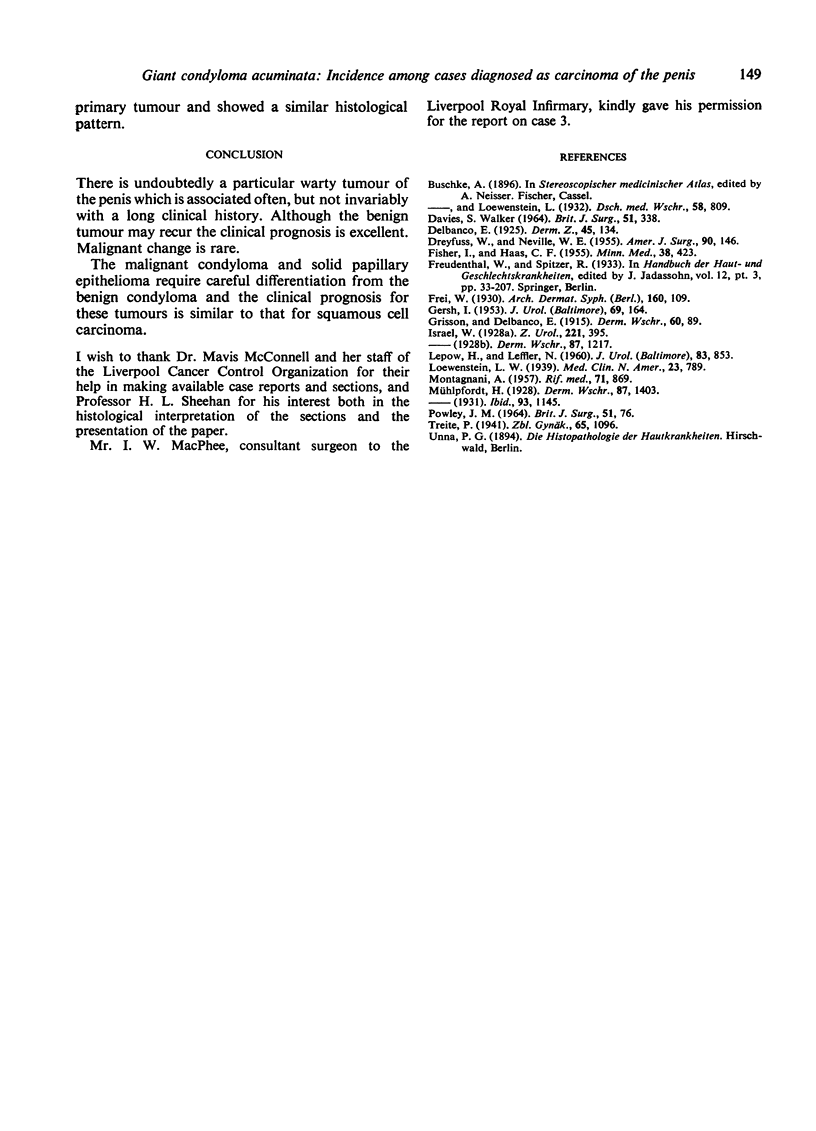
Images in this article
Selected References
These references are in PubMed. This may not be the complete list of references from this article.
- DREYFUSS W., NEVILLE W. E. Buschke-Loewenstein tumors (giant condylomata acuminata). Am J Surg. 1955 Jul;90(1):146–150. doi: 10.1016/0002-9610(55)90674-7. [DOI] [PubMed] [Google Scholar]
- FISHER I., HAAS C. F. Giant condyloma (verruca) simulating carcinoma of the penis. Minn Med. 1955 Jun;38(6):423–427. [PubMed] [Google Scholar]
- GERSH I. Giant condylomata acuminata (carcinoma-like condylomata or Buschke-Loewenstein tumors) of the penis. J Urol. 1953 Jan;69(1):164–172. doi: 10.1016/S0022-5347(17)68045-5. [DOI] [PubMed] [Google Scholar]
- LEPOW H., LEFFLER N. Giant condylomata acuminata (Buschke-Lowenstein tumor): report of two cases. J Urol. 1960 Jun;83:853–858. doi: 10.1016/S0022-5347(17)65810-5. [DOI] [PubMed] [Google Scholar]
- MONTAGNANI A. Lesioni pseudo-epiteliomatose dell'asta; condilomi acuminati di Buschke e Lowenstein. Riforma Med. 1957 Aug 3;71(31):869–873. [PubMed] [Google Scholar]
- POWLEY J. M. BUSCHKE-LOEWENSTEIN TUMOUR OF THE PENIS. Br J Surg. 1964 Jan;51:76–77. doi: 10.1002/bjs.1800510114. [DOI] [PubMed] [Google Scholar]



